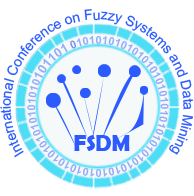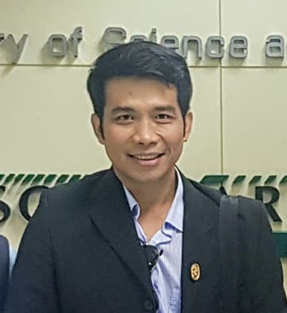Invited Speakers
Dr. Dmitry G. Korzun, Adjunct Professor
Department of Computer Science, Institute of Mathematics and Information Technology, Petrozavodsk State University (PetrSU), Russia;
Leading Research Scientist, Head of Data Mining Lab, Deputy Director for Research of Artificial Intelligence Center

Speech Title: Edge Analytics for Bearing Fault Detection based on Convolution Neural Network
Abstract: Advanced technologies of Sensorics and Internet of Things enable realtime data analytics based on multiple sensors covering the target industrial production system and its manufacturing processes. The rolling bearings fault detection problem is one of the most urgent and could be solved using convolution neural networks and edge artificial intelligence (edge AI) devices. The limitations of the hardware platform must be taken into account to achieve maximum performance. In this paper, we analyze efficient CNN architecture for bearings fault detection that is able to process data in real-time on edge AI devices. We observe that the accuracy of CNN is unsatisfactory for practical use, and better accuracy is possible with increasing the number of bearings in the training dataset. The invited speech is prepared together with PhD students Valentin, Perminov and Vladislav Ermakov from PetrSU. The reported study was funded from Russian Fund for Basic Research according to Research Project No. 19-07-01027.
Dr. Xuanhua Xu, Professor, Doctoral Supervisor
Director of Research Center for Big Data and Intelligent Decision, Department of Management Science and Information Management, Central South University of ChinaSpeech Title: A Large-Scale Group Risk Emergency Decision Method Based on the Entropy of Fuzzy and Conflict
Abstract: Based on the decision risk caused by both the ambiguity of emergency decision information and the large group preference conflict, a large group risk emergency decision method based on the Entropy of Fuzzy and Conflict is proposed. The first, the decision group is clustered by preferences to form aggregation preference matrix. Second, the interval-valued intuitionistic fuzzy (IVIF) distance is proposed in the form of intuitionistic fuzzy (IF) number in order to reduce the loss of preference information. And generalized IVIF number is also defined. Combining with prospect theory, the IF prospect matrix of different cluster is obtained by conversion. Then, large group emergency decision model of fuzzy conflict entropy is constructed, the goal is to minimize the risk in the process of emergency decision. According to the optimization model, the weight of every attribute can be got, and then prospect matrix and attribute’s weight are aggregated to figure out the comprehensive prospect values which decide the ranking of alternatives. Finally, a case analysis and comparison are used to illustrate the rationality and effectiveness of above method.
Keywords: Large-scale group; Emergency decision; entropy of fuzzy and conflict entropy; Risk decision
Dr. Feng Feng, Professor
Xi'an University of Posts and Telecommunications, ChinaSpeech Title: An Order-theoretic Framework for Multiple Attribute Decision Making Based on Weighted Intuitionistic Fuzzy Soft Sets
Abstract: Decision making is a ubiquitous activity in the real world, which can be seen as a process of ranking a collection of alternatives or selecting the optimal one(s) from them based on the available information. Multiple attribute decision making (MADM) refers to the decision making process in which alternatives are evaluated by virtue of several attributes, reflecting the performance of alternatives from independent perspectives. The notion of intuitionistic fuzzy soft sets provides an elegant framework for addressing MADM problems in an intuitionistic fuzzy setting. In this talk, we first introduce the history and recent progress of intuitionistic fuzzy multiple attribute decision making. Then some rudiments regarding intuitionistic fuzzy soft sets, order relations and preference structures are recalled. Moreover, we establish an order-theoretic framework for MADM based on weighted intuitionistic fuzzy soft sets. In the proposed scheme, the essence of intuitionistic fuzzy multiple attribute decision making is described as the process of aggregating the initial information expressed as a weighted intuitionistic fuzzy soft set and deriving a preference structure on the universe of alternatives. Illustrative examples are presented to demonstrate the validity and generality of the proposed framework.
Dr. Lanyong Zhang, Associate Professor
College of Automation, Harbin Engineering University (HEU), ChinaSpeech Title: Edge Intelligent Epidemic Control System Based on Visual Internet of Things
Abstract: The research goal of this paper is a big data intelligent epidemic management and control system in public places based on computer vision technology, innovatively introducing age as the basis for fever discrimination, comprehensively using computer vision technology to make up for the shortcomings of manual detection and traditional detection, and it is more suitable for application public places in a big data environment. Introduced the use of PyCharm, camera, infrared camera sensor, Newland edge computing NLE-AI800 development board, touch screen, the software and hardware of the intelligent epidemic management system in public places, the construction of cloud platform, and the edge-side task scheduling based on K-means clustering the design of the model. The comprehensive application of various technologies enables the accuracy of mask recognition of the intelligent epidemic management system in public places to reach 87.5%.
V. Padmavathi, Professor
Department of Computer Science and Engineering, Anurag University, IndiaSpeech Title: Block Chain Technologies and Quantum Computing
Abstract: Blockchain technology secures data from modification as it is a distributed ledger which is secured cryptographically. Most of the recent applications are implemented through blockchain and distributed ledger. Among the prevailing technology, cryptocurrency has taken over the finance sector. Though blockchain is ruling the present generation of technology, it is vulnerable to the attacks by quantum computer. The base to implement these technologies is hashing and digital signatures which are susceptible to threats and attacks. The principles of quantum mechanics are applied to build the blocks to enhance security. These principles are the concepts of quantum computing which uses qubits for communication. These encrypted data blocks rely on the laws of physics. As a result this leads to quantum challenge i.e. superposition of quantum states. The computations are performed through photons or qubits which are produced by means of photon’s polarization. These photons are the quantized features used to for encoding the information. Cryptography in quantum computing can be carried out by the principle of uncertainty which is the one of the principle of quantum mechanics. This quantum cryptography through quantum mechanics can be enhanced as quantum key distribution (QKD) in which distantly apart communicators share a common secret key. The QKD implements sharing of common secret key which is then used to implement blocks.
Dr. Peide Liu, Professor
School of Management Science and Engineering, Shandong University of Finance and Economics, ChinaSpeech Title: A consistency- and consensus-based method for group decision-making with incomplete probabilistic linguistic preference relations
Abstract: The use of incomplete probabilistic linguistic term sets (InPLTSs) can enrich the flexibility of qualitative decision-making information expression, especially in decision-making situations with high time pressure and insufficient knowledge. In this study, a method for group decision-making (GDM) with incomplete probabilistic linguistic preference relations (InPLPRs), considering consistency and consensus simultaneously, is developed. First, to fully explore the ability of InPLTSs to express uncertain information, InPLTSs are specifically classified. Then, an expected multiplicative consistency of InPLPRs is introduced, which is conductive to estimating the missing information more accurately and effectively. Subsequently, considering the consensus of GDM problems, a consensus index, which considers the principle of majority and minority, is developed to measure the agreement degree among multiple individuals. Because individual InPLPRs may not all meet acceptable consistency after reaching consensus, a consistency- and consensus-improving mathematical programing model considering information distortion is presented. Then, to aggregate all individual preference relationships into a collective one, a reliability induced ordered weighted geometric operator is introduced, whose induced variable reliability is determined by the confidence degree and consistency index of individual preference relationships. Furthermore, a multi-phase algorithm with InPLPRs is developed to solve GDM problems. Finally, a numerical example is presented to illustrate the applicability of the proposed method, and some detailed validity test and comparative analysis are conducted to highlight the advantages of the proposed method.
Sayan Kaennakham, Associate Professor
School of Mathematics, Suranaree University of Technology, ThailandSpeech Title: Generalized-Multiquadric Radial Basis Function Neural Networks (RBFNs) with Variable Shape Parameters for Function Recovery
Abstract: After being introduced to approximate two-dimensional geographical surfaces in 1971, the multivariate radial basis functions (RBFs) have been receiving a great amount of attention from scientists and engineers. In 1987 the idea was extended into the construction of neural networks corresponding to the beginning of the era of artificial intelligence, forming what is now called ‘Radial Basis Function Neural Networks (RBFNs)’. Ever since, RBFNs have been developed and applied to a wide variety of problems; approximation, interpolation, classification, prediction, in nowadays science, engineering, and medicine. This also includes numerically solving partial differential equations (PDEs), another essential branch of RBFNs under the name of the ‘Meshfree/Meshless’ method. Amongst many, the so-called ‘Multiquadric (MQ)’ is known as one of the mostly-used forms of RBFs and yet only a couple of its versions have been extensively studied. This study aims to extend the idea toward more general forms of MQ. At the same time, the key factor playing a very crucial role for MQ called ‘shape parameter’ (where selecting a reliable one remains an open problem until now) is also under investigation. The scheme was applied to tackle the problem of function recovery as well as an approximation of its derivatives using six forms of MQ with two choices of the variable shape parameter. The numerical results obtained in this study shall provide useful information on selecting both a suitable form of MQ and a reliable choice of MQ-shape for further applications in general.







